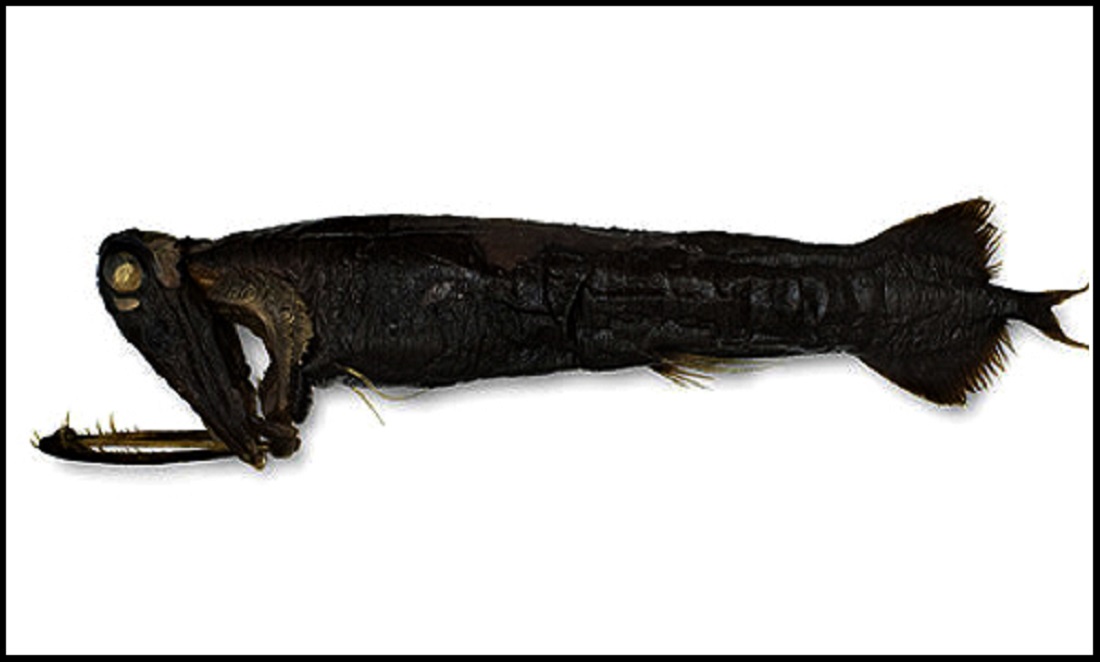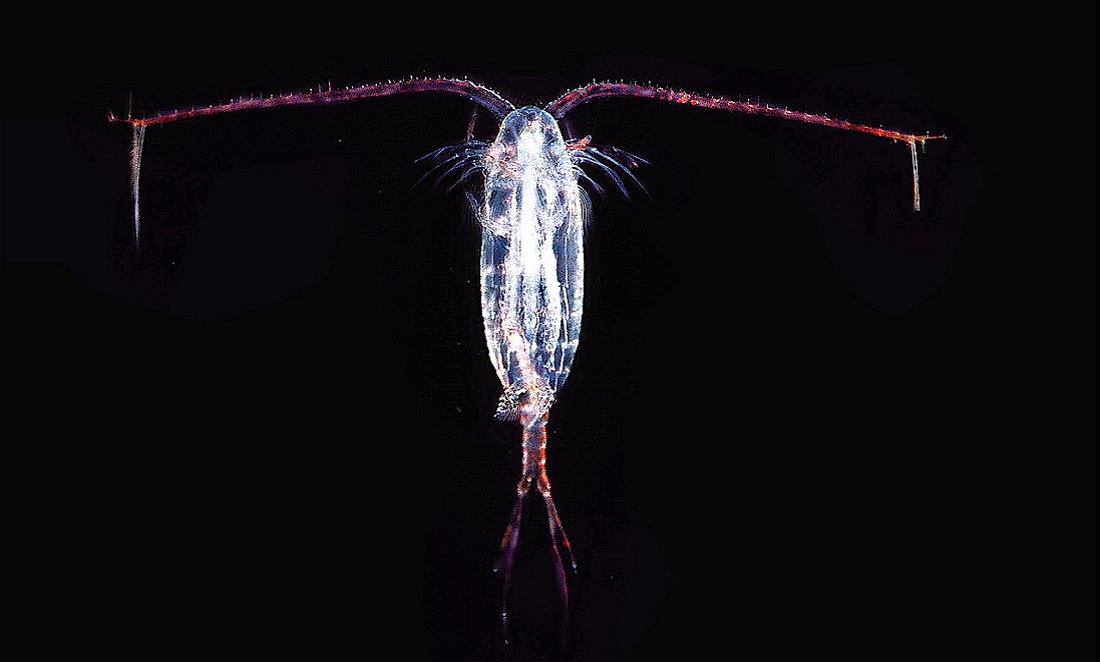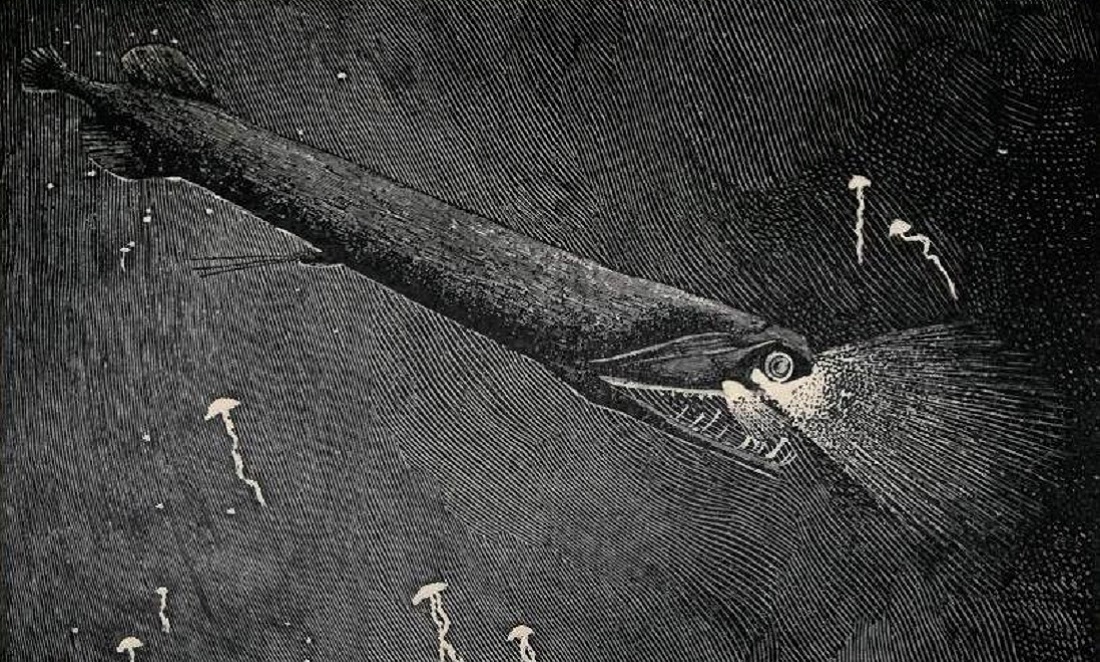Do insects make your skin crawl? What about snakes? There are some seriously gross critters around, but if you think a creepy-looking bug is the worst of it, you’re wrong. It gets much weirder.
Enter the black loosejaw, winner of Particle’s inaugural WTF (Weirdly Talented Fish) Award.

With huge fangs, an enormous mouth gape and jaws like the arms of a praying mantis, the black loosejaw isn’t exactly cute and cuddly. But it’s not just its looks that make it scary—the black loosejaw has a special ability that gives it an amazing advantage over other critters down in the deep.
SEEING RED
“The black loosejaw can shine a light on prey that most other deep sea animals can’t see,” says Dianne Bray, Senior Collection Manager of Vertebrate Zoology, Museums Victoria.
“It’s like they have a secret weapon, akin to hunting with night-vision goggles.”
If this ability sounds other-worldly, that’s because it is. The black loosejaw lives in the twilight zone—that dark part of the ocean between 200 and 1000 metres below the surface. The twilight zone is so different to our own environment, you may as well be talking about an alien planet.
“In the deep ocean, colours appear very different to how we see them at the surface. Long wavelength light, especially the colour red, doesn’t penetrate very far into the ocean—it’s absorbed in near-surface waters,” says Dianne.
“Lots of animals living in the twilight zone are red, including jellyfishes, crustaceans and even some fishes.”
“Because very few predators are able to see the colour red, red animals are well camouflaged in the deep sea,” says Dianne.
“Being red is a great way for fish to hide in the dark twilight zone.”
RED IS THE NEW BLACK—IN THE DEEP SEA
The redvelvet whalefish is one example of a deep-sea red fish that is essentially invisible to almost all other critters in the deep sea.
The black loosejaw, though, not only can see red light but can also produce it. It has a special light organ and can shine a red light and hunt for food while hiding from potential predators.
But how can the black loosejaw see red when other creatures can’t? No one knows for sure, but one theory is the black loosejaw evolved this remarkable ability from snacking on tiny critters called copepods.
EAT YOUR … COPEPODS?
“Copepods are found all across the ocean. It’s thought that, by eating them, the black loosejaw is ingesting the chemicals and bacteria it needs to develop eyes that are sensitive to red light.”

But that’s only one theory. We won’t learn more until we spend some more time down in the deep ocean with the other monsters of the deep.
Any takers?









